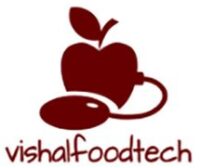
Table of Contents
GA General Aptitude
Verbal Aptitude
- Basic English grammar: tenses, articles, adjectives, prepositions, conjunctions, verb-noun agreement, and other parts of speech
- Basic vocabulary: words, idioms, and phrases in context
- Reading and comprehension
- Narrative sequencing
Quantitative Aptitude GATE XE 2023
- Data interpretation: data graphs (bar graphs, pie charts, and other graphs representing data), 2- and 3-dimensional plots, maps, and tables
- Numerical computation and estimation: ratios, percentages, powers, exponents and logarithms, permutations and combinations, and series
- Mensuration and geometry
- Elementary statistics and probability
Analytical Aptitude
- Logic: deduction and induction
- Analogy
- Numerical relations and reasoning
Spatial Aptitude Gate XE 2023
- Transformation of shapes: translation, rotation, scaling, mirroring, assembling, and grouping
- Paper folding, cutting, and patterns in 2 and 3 dimensions
XE-A Mathematics
Section 1: Linear Algebra
Algebra of real matrices:
- Determinant, inverse and rank of a matrix;
- System of linear equations (conditions for unique solution, no solution and an infinite number of solutions);
- Eigenvalues and eigenvectors of matrices;
- Properties of eigenvalues and eigenvectors of symmetric matrices, diagonalization of matrices;
- Cayley-Hamilton Theorem.
Section 2: Calculus
Functions of single variable:
- Limit, indeterminate forms and L’Hospital’s rule;
- Continuity and differentiability;
- Mean value theorems;
- Maxima and minima;
- Taylor’s theorem;
- Fundamental theorem and mean value theorem of integral calculus;
- Evaluation of definite and improper integrals;
- Applications of definite integrals to evaluate areas and volumes (rotation of a curve about an axis).
Functions of two variables:
- Limit, continuity and partial derivatives;
- Directional derivative;
- Total derivative;
- Maxima, minima and saddle points;
- Method of Lagrange multipliers;
- Double integrals and their applications.
Sequences and series:
- Convergence of sequences and series;
- Tests of convergence of series with non-negative terms (ratio, root, and integral tests);
- Power series; Taylor’s series;
- Fourier Series of functions of period 2π.
Section 3: Vector Calculus
- Gradient, divergence, and curl;
- Line integrals and Green’s theorem.
Section 4: Complex variables
- Complex numbers, Argand plane, and polar representation of complex numbers;
- De Moivre’s theorem;
- Analytic functions;
- Cauchy-Riemann equations.
Section 5: Ordinary Differential Equations
- First-order equations (linear and nonlinear);
- Second-order linear differential equations with constant coefficients;
- Cauchy-Euler equation;
- Second-order linear differential equations with variable coefficients;
- Wronskian;
- Method of variation of parameters;
- Eigenvalue problem for second-order equations with constant coefficients;
- Power series solutions for ordinary points.
Section 6: Partial Differential Equations
- Classification of second-order linear partial differential equations;
- Method of separation of variables:
- One dimensional heat equation and two-dimensional Laplace equation.
Section 7: Probability and Statistics
- Axioms of probability;
- Conditional probability;
- Bayes’ Theorem;
- Mean, variance, and standard deviation of random variables;
- Binomial, Poisson and Normal distributions;
- Correlation and linear regression.
Section 8: Numerical Methods
- Solution of systems of linear equations using LU decomposition, Gauss elimination method; Lagrange and Newton’s interpolations;
- Solution of polynomial and transcendental equations by Newton-Raphson method;
- Numerical integration by trapezoidal rule and Simpson’s rule;
- Numerical solutions of first-order differential equations by explicit Euler’s method.
XE – E Thermodynamics
Section 1: Basic Concepts
- Continuum and macroscopic approach;
- thermodynamic systems (closed and open);
- thermodynamic properties and equilibrium;
- state of a system, state postulate for simple compressible substances, state diagrams, paths, and processes on state diagrams;
- concepts of heat and work, different modes of work;
- zeroth law of thermodynamics;
- concept of temperature.
Section 2: First Law of Thermodynamics
- Concept of energy and various forms of energy;
- internal energy, enthalpy;
- specific heats;
- first law applied to elementary processes closed systems and control volumes, steady and unsteady flow analysis.
Section 3: Second Law of Thermodynamics
- Limitations of the first law of thermodynamics, concepts of heat engines and heat pumps/refrigerators, Kelvin- Planck and Clausius statements and their equivalence;
- reversible and irreversible processes;
- Carnot cycle and Carnot principles/theorems;
- thermodynamic temperature scale;
- Clausius inequality and concept of entropy; microscopic interpretation of entropy, the principle of increase of entropy, T-s diagrams; second law analysis of control volume;
- availability and irreversibility;
- third law of thermodynamics.
Section 4: Properties of Pure Substances
- Thermodynamic properties of pure substances in solid, liquid, and vapor phases;
- P-V-T behavior of simple compressible substances, phase rule, thermodynamic property tables and charts, ideal and real gases, ideal gas equation of state, and van der Waals equation of state;
- law of corresponding states, compressibility factor, and generalized compressibility chart.
Section 5: Thermodynamic Relations
- T-ds relations, Helmholtz and Gibbs functions, Gibbs relations,
- Maxwell relations, Joule-Thomson coefficient, coefficient of volume expansion,
- adiabatic and isothermal compressibilities, Clapeyron and Clapeyron-Clausius equations.
Section 6: Thermodynamic Cycles
- Carnot vapor cycle, ideal Rankine cycle, Rankine Reheat cycle,
- air-standard Otto cycle, air-standard Diesel cycle, air-standard Brayton cycle,
- vapor-compression refrigeration cycle.
Section 7: Ideal Gas Mixtures
- Dalton’s and Amagat’s laws, properties of ideal gas mixtures, air-water vapor mixtures and simple thermodynamic processes involving them;
- specific and relative humidities, dew point and wet bulb temperature, adiabatic saturation temperature, and psychrometric chart.
XE – G Food Technology
Section 1: Food Chemistry and Nutrition
- Carbohydrates: structure and functional properties of mono-, oligo-, & poly- saccharides including starch, cellulose, pectic substances and dietary fiber, gelatinization, and retrogradation of starch.
- Proteins: classification and structure of proteins in food, biochemical changes in the post-mortem, and tenderization of muscles.
- Lipids: Classification and structure of lipids, rancidity, polymerization, and polymorphism. Pigments: carotenoids, chlorophylls, anthocyanins, tannins, and myoglobin.
- Food flavors: terpenes, esters, aldehydes, ketones, and quinines.
- Enzymes: specificity, simple and inhibition kinetics, coenzymes, enzymatic and non-enzymatic browning.
- Nutrition: balanced diet, essential amino acids, and essential fatty acids, protein efficiency ratio, water-soluble and fat-soluble vitamins, the role of minerals in nutrition, co-factors, anti-nutrients, nutraceuticals, nutrient deficiency diseases. Chemical and biochemical changes: changes occur in foods during different processing.
Section 2: Food Microbiology
- Characteristics of microorganisms: morphology of bacteria, yeast, mold and actinomycetes, spores and vegetative cells, gram-staining.
- Microbial growth: growth and death kinetics, serial dilution technique.
- Food spoilage: spoilage microorganisms in different food products including milk, fish, meat, egg, cereals, and their products.
- Toxins from microbes: pathogens and non-pathogens including Staphylococcus, Salmonella, Shigella, Escherichia, Bacillus, Clostridium, and Aspergillus genera.
- Fermented foods and beverages: curd, yogurt, cheese, pickles, soya sauce, sauerkraut, idli, dosa, vinegar, alcoholic beverages, and sausage.
Section 3: Food Products Technology
- Processing principles: thermal processing, chilling, freezing, dehydration, the addition of preservatives and food additives, irradiation, fermentation, hurdle technology, and intermediate moisture foods.
- Food packaging and storage: packaging materials, aseptic packaging, controlled and modified atmosphere storage.
- Cereal processing and products: milling of rice, wheat, and maize, parboiling of paddy, bread, biscuits, extruded products, and ready-to-eat breakfast cereals.
- Oil processing: expelling, solvent extraction, refining, and hydrogenation.
- Fruits and vegetables processing: extraction, clarification, concentration, and packaging of fruit juice, jam, jelly, marmalade, squash, candies, tomato sauce, ketchup, and puree, potato chips, and pickles.
- Plantation crops processing and products: tea, coffee, cocoa, spice, extraction of essential oils and oleoresins from spices.
- Milk and milk products processing: pasteurization and sterilization, cream, butter, ghee, ice- cream, cheese, and milk powder.
- Processing of animal products: drying, canning, and freezing of fish and meat; production of egg powder.
- Waste utilization: pectin from fruit wastes, uses of by-products from rice milling.
- Food standards and quality maintenance: FPO, PFA, A-Mark, ISI, HACCP, food plant sanitation and cleaning in place (CIP).
Section 4: Food Engineering
- Mass and energy balance;
- Momentum transfer: Flow rate and pressure drop relationships for Newtonian fluids flowing through pipe, Reynolds number.
- Heat transfer: heat transfer by conduction, convection, radiation, heat exchangers.
- Mass transfer: molecular diffusion and Flick’s law, conduction and convective mass transfer,
- permeability through single and multilayer films.
- Mechanical operations: size reduction of solids, high-pressure homogenization, filtration, centrifugation, settling, sieving, mixing & agitation of liquid.
- Thermal operations: thermal sterilization, evaporation of liquid foods, hot air drying of solids, spray and freeze-drying, freezing and crystallization.
- Mass transfer operations: psychometric, humidification and dehumidification operations.
